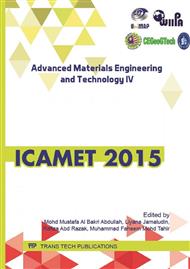p.540
p.547
p.555
p.560
p.565
p.573
p.578
p.583
p.590
Mathematical Modelling of Stress-Strain State of Multilayer Shell Molds
Abstract:
The analysis of the trends for development of technological processes to form shell molds shows that the accuracy and purity of the surface of shaped castings are one of the main criteria for the level of development of the science and technology of foundry engineering. The equations of continuum mechanics and thermal conductivity and the numerical method were used to build a mathematical model of SSS of multilayer shell mold to determine the temperature fields in a shell mold and solidifying casting, thickness of solidified layer of the casting, stress, strain, and displacement of shell layers against each other, as well as ferrostatic pressure on the metal form. The calculation results show that at metal casting, the highest temperature differences occur between the first and second layers of a shell mold, and the maximum values of the stresses and strains are typical for the first layer of a shell mold. The mechanism of the effect of temperature difference between the layers of the shell mold on fracture toughness of the shells and its critical value are determined, above which either a decomposition of a shell mold occur, or through-thickness cracking occur, which lead to the destruction of a shell mold. The ignition process of shell molds in the control filler has no significant influence on the formation of cracks, since the temperature difference between the shell layers does not reach critical values.
Info:
Periodical:
Pages:
565-572
Citation:
Online since:
May 2016
Authors:
Price:
Сopyright:
© 2016 Trans Tech Publications Ltd. All Rights Reserved
Share:
Citation:


